66 F. maximum temperature yesterday at KMSP.
59 F. average high on April 18.
79 F. high on April 18, 2016.
April 19, 1893: A heavy snowstorm at Bird Island would last until the 21st. 17 inches of snow would fall, with drifts 3 to 4 feet high.
April 19, 1820: The first tornado ever reported in Minnesota hits the camp that would soon become Ft. Snelling. It damages the roof of a barracks, with no one injured.
Safety Tips for Tornadoes and Lightning
The extended outlook? Partly to mostly with a chance. The long-range forecast is a riddle wrapped in an enigma, but new Doppler technology allows us to make a much more accurate short-range, 0 to 3 hour "Nowcast".
The extended outlook? Partly to mostly with a chance. The long-range forecast is a riddle wrapped in an enigma, but new Doppler technology allows us to make a much more accurate short-range, 0 to 3 hour "Nowcast".
If
you don't have a basement the safest place to ride out a tornado is a
small, interior room on the ground floor. The more walls between you and
the tornado, the better. People have survived tornadoes by hiding in
their bathtubs, with a mattress above their heads.
You
probably won't see a tornado this year but lightning is pervasive. NOAA
reminds us to avoid plumbing, windows, doors and porches when lightning
is flickering overhead. Smartphones are fine, but stay off corded
phones. Your home, office, store or vehicle offers the best protection.
The
atmosphere is still too cool and stable for a widespread severe weather
outbreak, but nearly an inch of additional rain is possible by tonight.
You may be able to HEAR your lawn growing later today.
Showers taper Thursday; enough sunshine for highs near 60F Friday into Sunday. Some of the nicest weather of the year? Yep.
Storms, Hail and Lightning.
A home, office, store or even a vehicle offers the greatest protection
from lightning. Homeland Security and Emergency Management has a good post focused on non-tornado-related thunderstorm threats. Here are a few nuggets:
* Straight-line thunderstorm winds can exceed 120 mph, which is stronger and more destructive than most tornadoes.
* On average, nearly 50 people die per year in the United States due to lightning (down from an average of nearly 330 people per year in the 1940’s), and nearly four times as many men are killed as women.
* Lightning causes $1 billion in damage each year.
* Lightning is hotter than the surface of the sun, and can reach temperatures around 50,000 degrees Fahrenheit!
* Hail can exceed softball size (5” diameter) and does even more damage when driven by the wind.
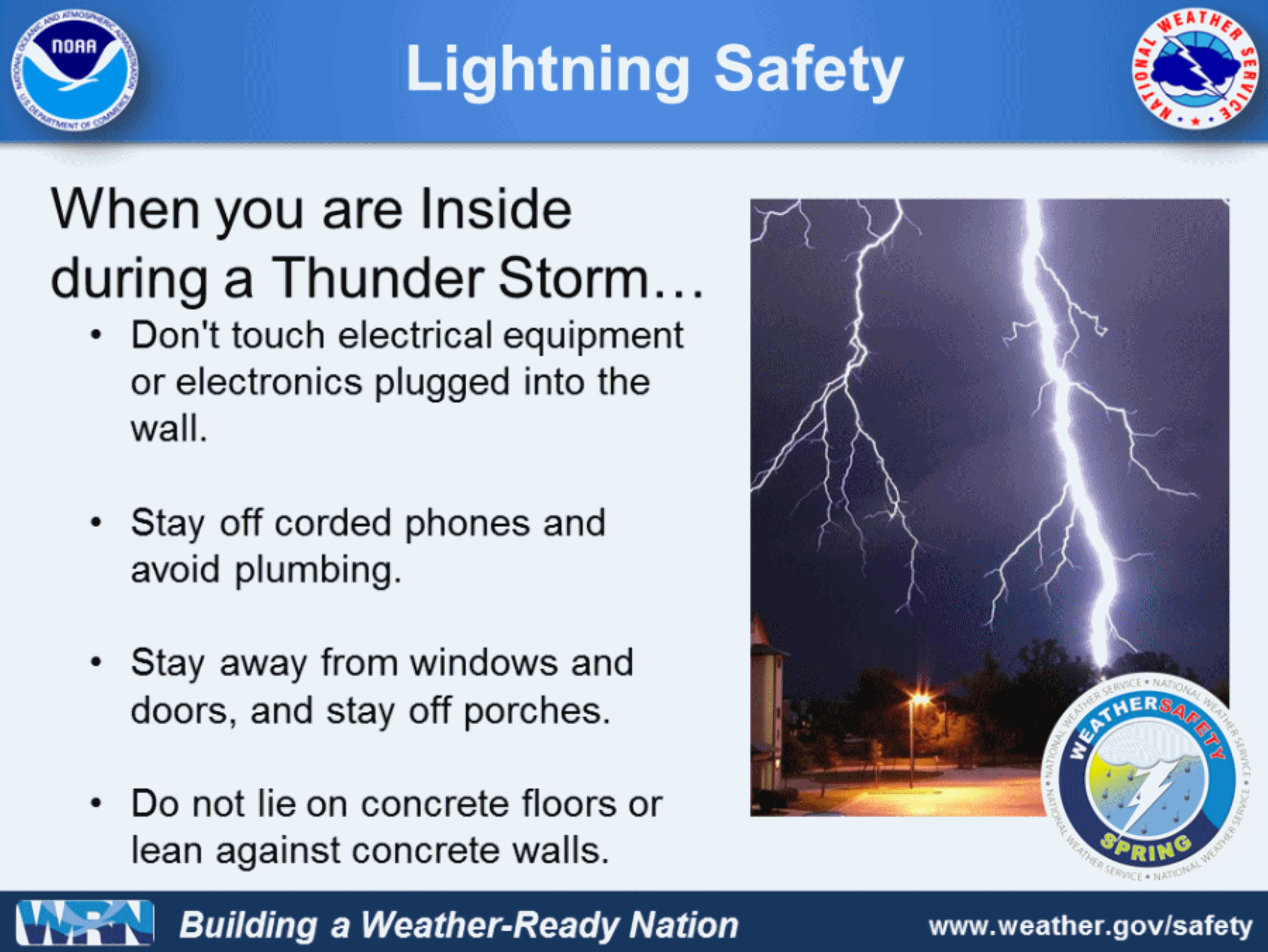
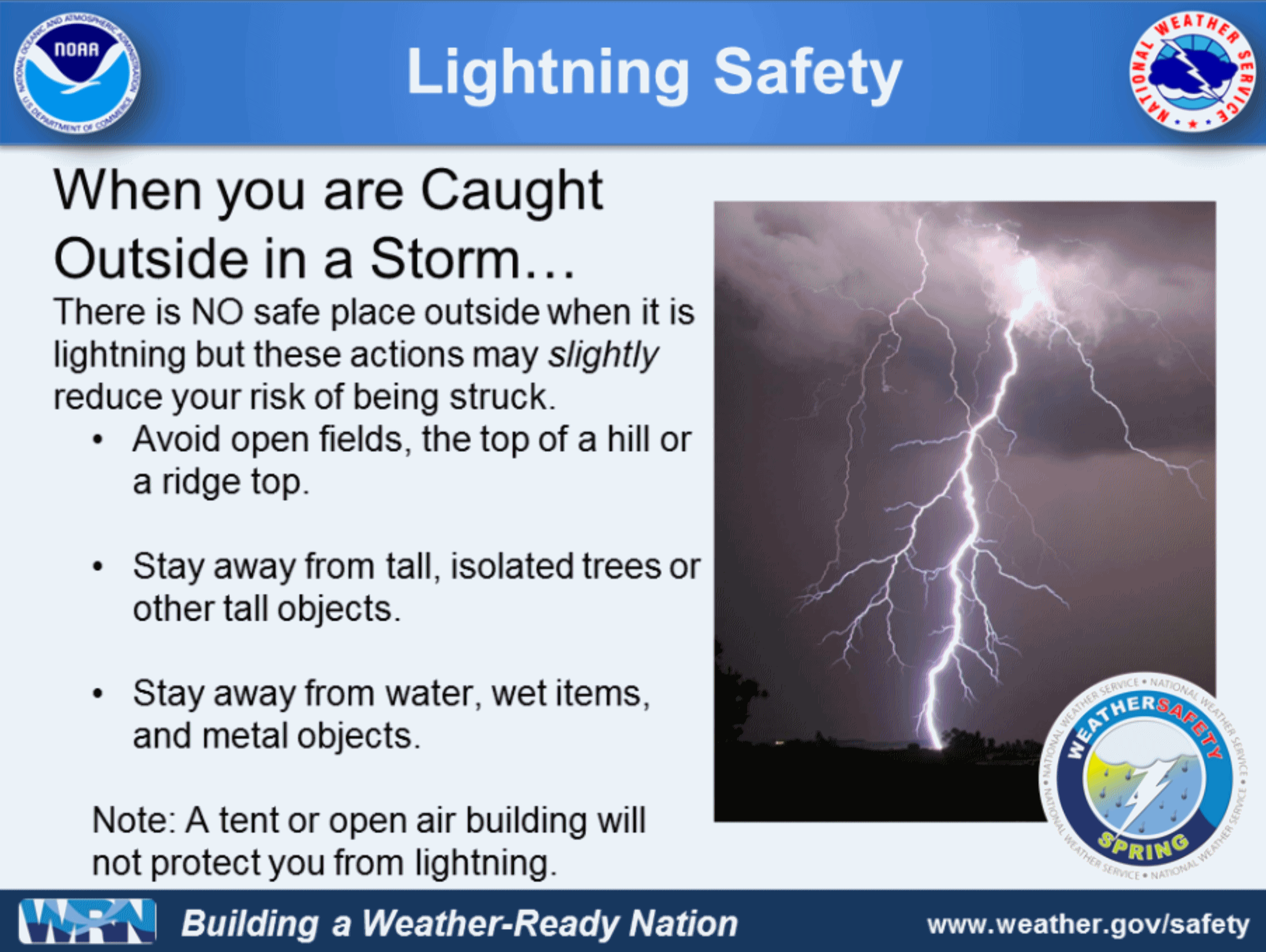
* On average, nearly 50 people die per year in the United States due to lightning (down from an average of nearly 330 people per year in the 1940’s), and nearly four times as many men are killed as women.
* Lightning causes $1 billion in damage each year.
* Lightning is hotter than the surface of the sun, and can reach temperatures around 50,000 degrees Fahrenheit!
* Hail can exceed softball size (5” diameter) and does even more damage when driven by the wind.
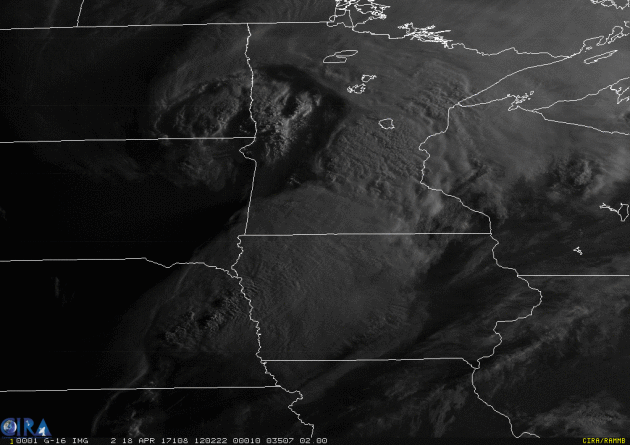

Budget Cuts to Weather and Satellite Programs Are Likely to Cost Us a Lot More Than They Save. Here's an excerpt from Pacific Standard: "...Organizations from airlines to the military to your local television station use data from these satellites to make operational decisions, issue forecasts, and warn people about tornadoes, hurricanes, and floods. Scientists also use the data to understand how our local weather patterns are affected by long-term changes in climate. There are several different types of weather satellites operated by the federal government, among which is a set that orbits the Earth’s poles. Polar-orbiting satellites help forecasters see global trends driving the weather in the United States, and the data they produce is critical for making forecasts days in advance.Our weather satellites are the responsibility of two federal agencies, the Department of Defense and the National Atmospheric and Oceanic Administration, both of which are behind in their efforts to launch the next generation of polar orbiters. If the existing satellites fail before the new ones are in place, we will have a gap in our weather data, which, the GAO warns, “would endanger lives, property, and our nation’s critical infrastructures...”
File image: NASA Goddard Space Flight Center.
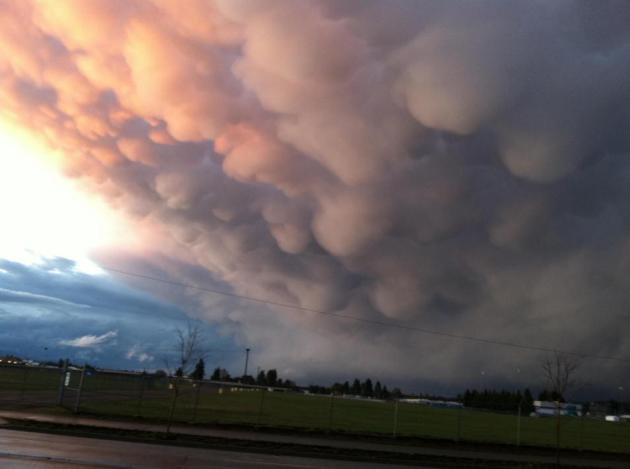
File photo: Randy Widmayer.

A Forecast Your Lawn Should Love. The 84-hour outlook from NOAA's NAM model looks mostly-soggy for the northern half of the USA, with a parade of sloppy storms pushing east. Expect snow over the highest peaks of the Rockies, even some slush mixing in from the Minnesota Arrowhead into the U.P. of Michigan and far northern New England. Future Radar: NOAA and Tropicaltidbits.com.
Erratic Solutions.
Not terribly much consistency with the long-range (2 week) GFS forecast
at 500 mb. Yesterday the model was hinting at an Omega Block, a holding
pattern by early May with a wet bias for both coasts. Today's solution
for the evening of May 2 suggests relative warmth east of the Rockies, a
chilly, damp bias for New England and the western USA.
Severe Weather Myths, Misses and Misconceptions. Every spring I hear the same stuff from bright, high-functioning adults. "Tornadoes can't hit cities or cross lakes & rivers!" Wrong. "If it's not raining I can't be hit by lightning." Wrong. "It's just "heat lightning" Paul, not a threat!" No such thing as heat lightning; it's just lightning from a distant T-storm, too far away to hear the thunder. 554 tornadoes have already touched down in 2017 (preliminary count), on track to rival record seasons in 2011 and 2008. Fact: 44 percent of Americans killed by tornadoes since 1985 were in mobile homes. Make sure there's a shelter nearby - consider moving to a safer location (office building or a store) when a "watch" is issued.
File photo: NOAA.

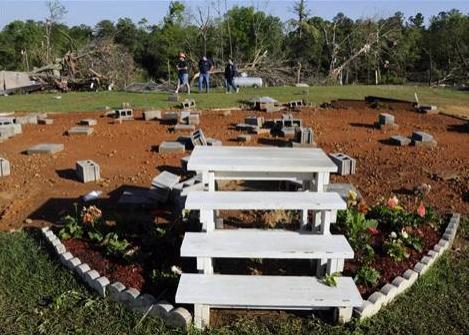
When a Tornado Looms, Many Residents of Trailer Parks Are On Their Own.
I still can't quite fathom how it isn't a state law that every mobile
home park should have an underground shelter available. I know it costs
money, but it's a little like selling a car without brakes. Which is
great, until you need to apply the brakes. Here's an excerpt of a story
at Illinois's Daily Herald: "...Patti
Thompson, a spokeswoman for Illinois Emergency Management Agency, said
people living in trailer parks should leave their homes as soon as
severe storm or tornado watches are issued and head to a safe place,
such as a friend's house with a basement or another sturdy building.
It's especially important to use weather radios to be aware of the
conditions. "Weather radios make a really loud sound when a warning's
been issued in the area," she said. "But that's almost too late for
people in mobile homes. They really need to be looking for a safer place
even when there's just a watch out." Thompson said their
recommendations are based on the consensus from the weather science
community including the National Weather Service..."
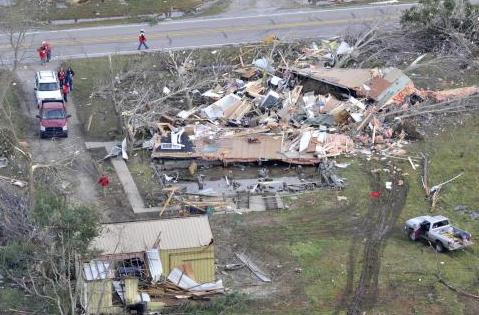
Why Rating Tornadoes Can Be Difficult in Rural Locations. Because intensity estimates are based on actual damage, and if a tornado strikes a field it's much harder to estimate wind speeds, according to a post at Weather Underground: "A large EF3 tornado that struck near Dimmitt, Texas, last Friday illustrated the difficult task the National Weather Service sometimes faces when rating the strength of tornadoes. Tornadoes are rated from EF0 to EF5 on the Enhanced Fujita Scale based on the damage that they cause, not by their appearance or any other real-time metric. But when a tornado strikes a mostly rural area with few structures, the damage may be so sparse that it can be difficult to determine the exact strength of the winds..."
Graphic credit: NOAA SPC.
File photo: Arab News.
How Wall Street Once Killed the U.S. Solar Industry. The Atlantic explains: "Why is the American solar-power industry so small? It’s less obvious than it may seem. The global industry is a $65-billion business, and the United States has been involved in it from the beginning. NASA first improved and perfected panels for early satellite and Apollo missions. American firms have been manufacturing and selling solar panels for 40 years. Yet North American firms produce only about 3 percent of the world’s solar panels. China and Taiwan, meanwhile, make more than 60 percent of them. Labor in East Asia is often cheaper than it is in the United States, but that’s not the only factor..."
The Despair of Learning That Experience No Longer Matters.
As you get older you perfect your craft and your income rises. That may
have been true in the 1950s and 1960s but today, with globalization,
automation, robotics and artificial intelligence all bets are off.
Here's a clip from a New Yorker article: "...Our
data are consistent with a model in which the decline in real wages led
to a reduction in labor force participation, with cascading effects on
marriage, health, and mortality from deaths of despair.” The return to
experience is not the best-known economic concept, but it is alive in
most of our contemporary economic spook stories, in which the callow
private-equity analyst has the final power over an industry in which
people have long labored, in which the mechanical robot replaces the
assembly-line worker, in which the doctor finds his diagnosis corrected
by artificial intelligence. It seemed to match at least one emotional
vein that ran through the Trump phenomenon, and the more general
alienation of the heartland: people are aging, and they are not getting
what they think they have earned..."
Are You Walking the Path of Successful or Average? Here's the intro to a challenging post at Thrive Global: "What
do you believe to be true that most people do not? asks Peter Thiel in
his book "Zero To One". This question is genius. Why? Because although
we all strive for unconventional levels of financial success, most
people think conventionally, leading them nowhere. Thiel’s question
forces you to think like a contrarian for a brief powerful moment. Do
you own your own life? I ask, because most of us live like we don’t.
Thiel’s question is brilliant because the way you answer it tells you
what path you’re already on. This is where your life and money get
interesting. Let’s go..." (Photo credit: Joshua Earle).
My Next Vehicle.
I'd love to cruise down I-35 in this baby, a self-described Urban
Tornado Assault Vehicle. I wouldn't actually drive into a tornado, but it
would be great fun pulling up to the McDonalds drive-thru. Photo
courtesy of Steve Worthington. Wow.
TODAY: Chilly, more rain arrives. Winds: NE 8-13. High: 51
WEDNESDAY NIGHT: More rain. Low: 40
THURSDAY: Showers taper, clouds linger. Chilly. Winds: N 10-15. High: near 50
FRIDAY: Partly sunny, much nicer. Winds: N 8-13. Wake-up: 38. High: near 60
SATURDAY: Some sun, nicer day of the weekend. Winds: NW 8-13. Wake-up: 40. High: 62
SUNDAY: More clouds, few showers up north. Winds: NE 8-13. Wake-up: 45. High: 59
MONDAY: Showers, risk of a T-storm. Winds: S 15-25. Wake-up: 44. High: 58
TUESDAY: Peeks of sun, a drier day. Winds: NW 10-15. Wake-up: 42. High: 55
Climate Stories....
Photo credit: "A stream flows through the toe of Kaskawulsh Glacier in Kluane National Park in the Yukon. In 2016, this channel allowed the glacier’s meltwater to drain in a different direction than normal, resulting in the Slims River water being rerouted to a different river system." (Dan Shugar)

File photo: National Park Service.
Image credit: "Miami under a 6-foot sea level rise scenario." Climate Central.
Graphic credit: "Global temperature anomalies for each month since 1880. March 2017 was the second warmest March, behind only 2016." Credit: NASA
Arctic Meltdown: Sea and Land Ice Are Cracking Up at a Record Rate. ThinkProgress has details: "Driven
by warming air and water temperatures, Arctic sea ice continues its
death spiral. A big new crack has been found in a major outlet glacier
of the Greenland ice sheet, whose disintegration is speeding up. Last
month set records for the lowest Arctic sea ice extent ever in March, as
well as the lowest sea ice volume and lowest sea ice thickness. Here is
a chart of the volume of Arctic sea ice found at the end of every March
since 1979. Not a pretty picture..."
Graph credit: "The volume of sea ice at the end of March has dropped sharply since 1979." CREDIT: PIOMAS data plotted by Oren at the Arctic Sea Ice Forum.
Quora Question: "How Valid is the Assertion by NOAA That There Has Been No Hiatus in Global Warming? Here's an excerpt of an answer at Quora from Dr. Richard Muller, CoFounder, Berkeley Earth, Prof Physics UCBerkeley, Energy for Future Presidents: "Look at it yourself and see what you think. Does the last 15 years look like a pause to you? Some
people mistakenly argue that these results are inconsistent with those
taken from satellite measurements. That conclusion is true only if you
ignore the systematic uncertainties in the satellite results. Include
those in, and you'll see that they do not disagree with these more
precise surface measurements. Please
note that we pay a great deal of attention to skeptics. We use only the
raw unprocessed data. We use all of it, thus avoiding the potential
for data selection bias. All our adjustments are automated and
published. All the data are made publicly available, in a convenient
format. We did careful studies of station quality bias and urban heat
islands. We make no use whatsoever of global climate models."
All this is available at our website: BerkeleyEarth.org
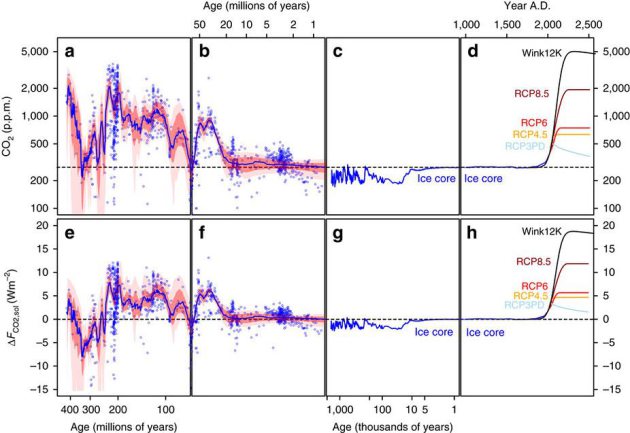
Humans on the Verge of Causing Earth's Fastest Climate Change in 50 Million Years. Here's an excerpt at The Guardian: "A new study published in Nature Communications
looks at changes in solar activity and carbon dioxide levels over the
past 420 million years. The authors found that on our current path, by
mid-century humans will be causing the fastest climate change in
approximately 50 million years, and if we burn all available fossil
fuels, we’ll cause the fastest change in the entire 420 million year
record...."
Image credit: "Changes in atmospheric carbon dioxide and in the combined solar and carbon dioxide forcing over the past 420 million years." Illustration: Foster et al. (2017); Nature Communications.
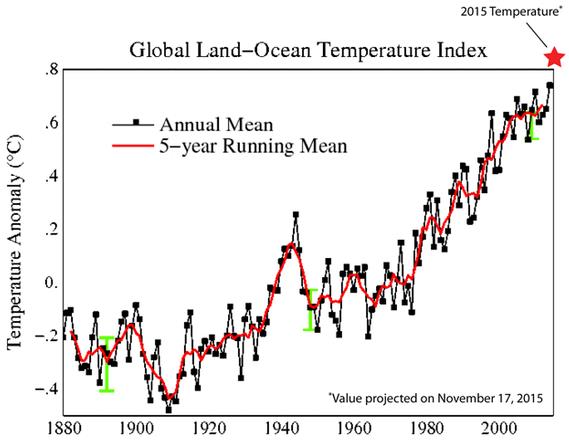
7 Reasons Conservatives Should Support Climate Change Solutions. My hunch is this story was not written on a typewriter. Huffington Post has the story: "...There
was a time when typewriters were the tools used to communicate in the
written form, but then along came the computer. Initially computers were
very expensive and not very useful. The typewriter was a much better
tool. Fast forward to today and clearly that is not the case. But that
is the way technology works – technology gets better and cheaper.
Renewable energy technologies have already improved and lowered in costs
and will only continue to do so. In fact, according to Bloomberg New
Energy Finance’s chief editor, Angus McCrone, “wind and solar could become the cheapest available option by the 2020s in some countries.” Fossil fuels will not follow this trend, and their cost to our environment and our health just keeps going up..."
No comments:
Post a Comment